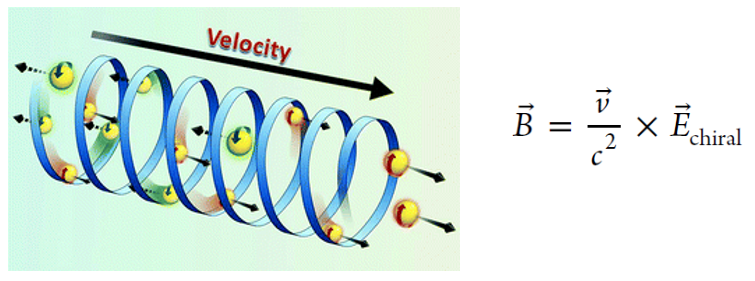The Chiral-Induced Spin Selectivity Effect
Our group is examining the nature of the Chiral-Induced Spin Selectivity (CISS) effect and exploring ways in which it can be exploited technologically. As electrons move through a chiral molecule (or structure) the electron current generates an effective magnetic field, B, that acts on the electrons’ intrinsic magnetic moment. Thus, a preference exists for electrons with one magnetic moment direction to pass through the chiral molecule (or structure).
